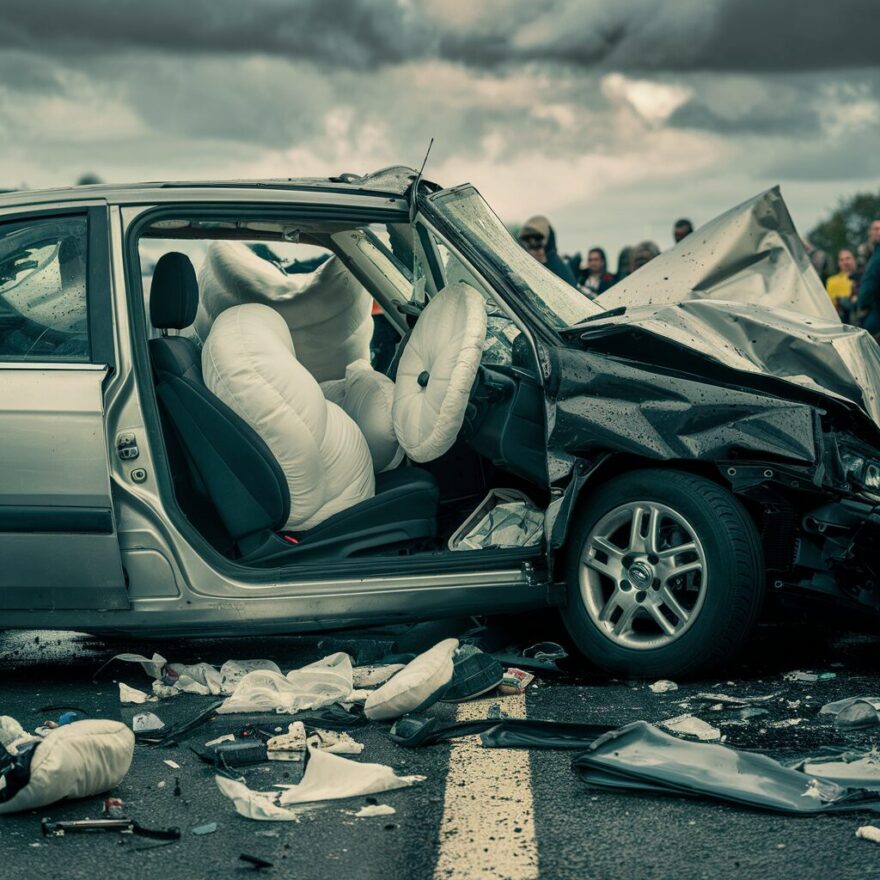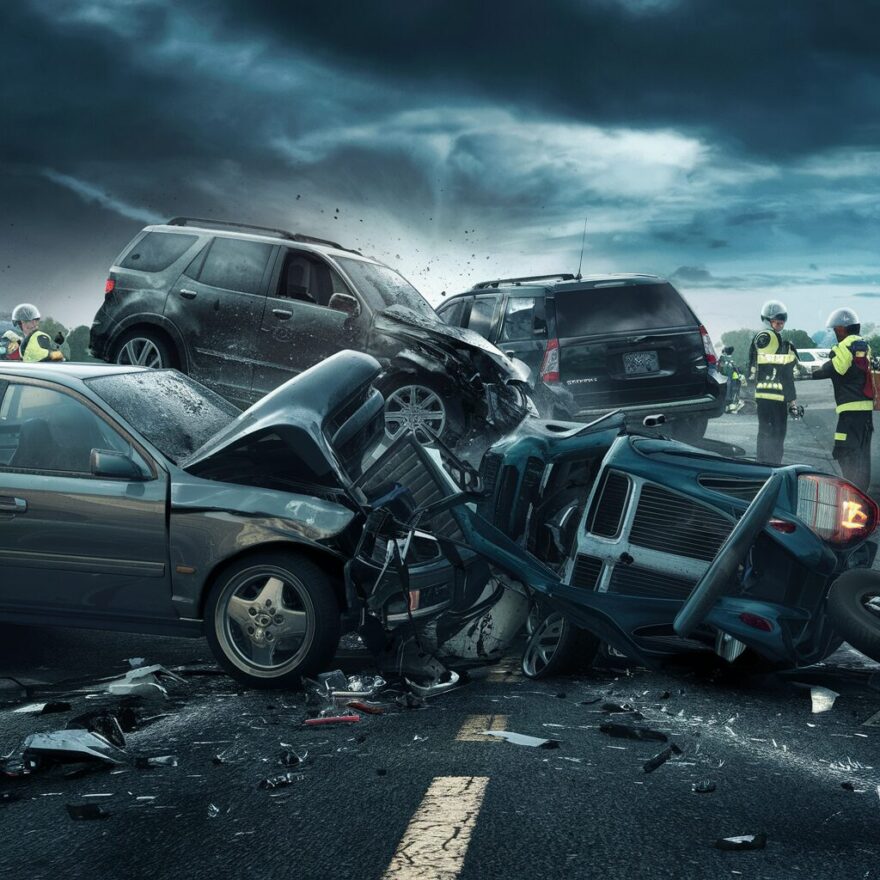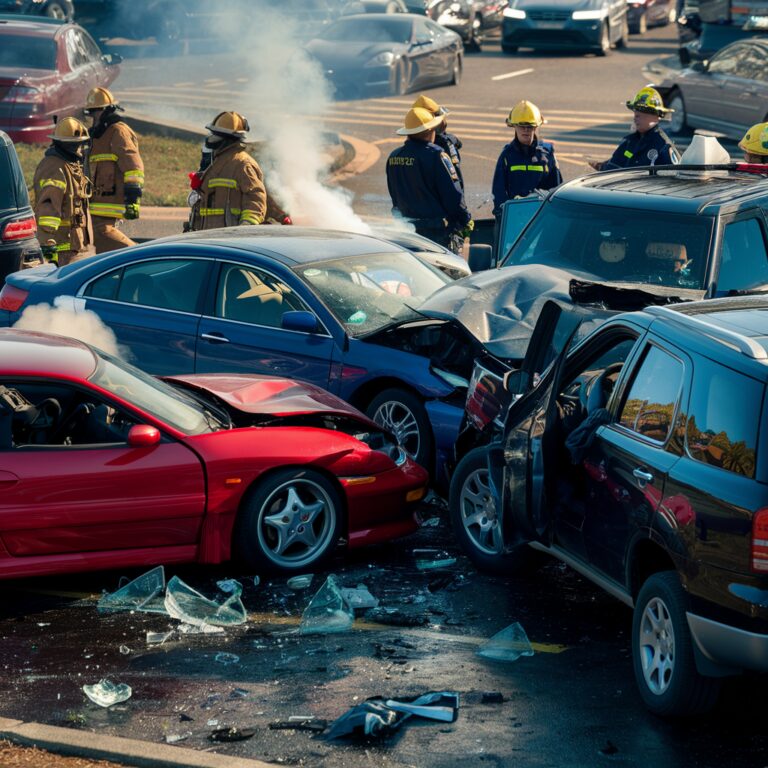When it comes to car accidents, it’s crucial to know the first steps you should take. Like a skilled detective at a crime scene, you must gather the necessary information and act swiftly. After all, your safety and the well-being of others involved depend on it.
So, what should you do?
First, check everyone for injuries, ensuring that no one requires immediate medical attention.
Next, move yourself and your vehicle to a safe location away from traffic.
Then, contact the authorities to report the accident and seek their assistance.
Don’t forget to gather important information from the other party involved, such as their contact and insurance details.
Lastly, document the accident scene by taking photos and noting any relevant details.
By following these steps, you’ll navigate the aftermath of a car accident with confidence and efficiency.
Check for Injuries

Check yourself and your passengers for any injuries immediately after a car accident. Your safety and well-being should be your top priority. Take a moment to assess your own condition, checking for any visible injuries or pain. Then, turn your attention to your passengers and ask if they’re feeling okay. Even if everyone seems fine, it’s important to seek medical attention as soon as possible. Some injuries may not be immediately apparent, and it’s better to be safe than sorry.
After ensuring the immediate safety of everyone involved, you should consider the insurance claims process. It’s important to document any injuries sustained in the accident, as this will be crucial in your insurance claim. Take photos of any visible injuries, and keep a record of any medical treatment you receive. This will help support your claim and ensure that you receive the compensation you’re entitled to.
Move to a Safe Location
Ensure the safety of yourself and others involved by promptly moving your vehicle to a safe location after a car accident. Once you have ensured that everyone is alright and checked for injuries, it’s crucial to move your vehicle out of harm’s way. By doing so, you can prevent further accidents and reduce the risk of injury to yourself and others.
First, assess the situation. Determine if your car is drivable or if it needs to be towed. If your vehicle is still operational, carefully move it to the side of the road or a nearby parking lot. Be cautious of traffic and make sure to use your hazard lights to alert other drivers.
If your car isn’t driveable, contact a roadside assistance service to help you move it safely. They’ll have the necessary equipment and expertise to handle the situation professionally and efficiently. They can also provide guidance on what to do next.
Moving your vehicle to a safe location is essential not only for your safety but also for legal reasons. It allows for a clear assessment of the accident scene and prevents further damage or accidents. It’s also important to note that before making any decisions or accepting any liability, it’s advisable to seek legal advice from a qualified professional.
Contact the Authorities

Once you have moved your vehicle to a safe location, the next important step is to promptly contact the authorities. This is essential because the authorities will provide assistance and document the accident report, which is crucial for insurance claims.
When contacting the authorities, it’s important to remain calm and provide them with accurate information about the accident. Be prepared to provide details such as the location of the accident, the number of vehicles involved, and any injuries sustained.
While waiting for the authorities to arrive, it’s also advisable to notify your insurance company about the accident. This will help expedite the claims process and ensure that you receive the necessary coverage for any damages or injuries.
Additionally, it’s crucial to seek medical attention, even if you don’t immediately feel injured. Some injuries may not be apparent at first, and seeking medical attention will help identify and address any underlying issues. It’s important to keep records of any medical treatment received, as this will be vital for insurance purposes.
Gather Information From the Other Party
Collect the necessary information from the other party involved in the car accident. This step is crucial for filing an insurance claim and ensuring a smooth resolution to the incident. Begin by exchanging insurance details with the other driver. Obtain their insurance company name, policy number, and contact information. Likewise, provide them with your own insurance information.
In addition to exchanging insurance details, it’s important to gather witness statements if there were any bystanders who witnessed the accident. Ask for their contact information and a brief statement about what they saw. Their testimony could be valuable in supporting your claim.
Remember to remain calm and polite throughout this process. Avoid assigning blame or engaging in arguments with the other party. Stick to collecting the necessary information and focus on resolving the situation in the best way possible.
Document the Accident Scene
Take photographs of the accident scene using your smartphone or camera. This step is crucial in documenting the evidence for insurance claims. By capturing photographs of the accident scene, you provide visual proof of the damages and the surrounding conditions at the time of the accident.
Photograph evidence serves as valuable documentation for insurance claims. It allows you to provide a clear picture of the damages to your vehicle and the other party involved. Make sure to take photos from various angles, capturing the extent of the damages and any relevant details such as skid marks or road signs. These photographs can help support your claim and provide evidence of the other party’s negligence.
In addition to photographing the damages, it’s also important to document the accident scene as a whole. Take pictures of the surrounding area, including any traffic signs, road conditions, and other relevant details. These photographs can help establish the context of the accident and provide additional evidence to support your claim.
Remember to be thorough and capture as much detail as possible. These photographs can play a crucial role in the claims process and help ensure that you receive fair compensation for your damages.
Financial Considerations After a Car Accident

Dealing with the aftermath of a car accident isn’t just about physical recovery and handling insurance claims; it often involves managing financial challenges as well. This is where understanding options like car accident loans can be crucial. Car accident loans, as seen in this LA Times article, can provide necessary financial support during this difficult time, helping to cover immediate expenses such as medical bills, vehicle repairs, and other living costs while you navigate the complexities of insurance settlements. It’s important to explore all available options to ensure you remain financially stable during the recovery process.
Frequently Asked Questions
Should I Admit Fault at the Accident Scene?
Don’t admit fault at the accident scene. Discussing fault allocation can have consequences. It’s important to gather evidence, exchange information, and contact insurance companies. Consult a lawyer from Shuman Legal if needed. Stay calm and follow proper procedures.
How Long Do I Have to File an Insurance Claim After a Car Accident?
You should file an insurance claim as soon as possible after a car accident. This is an important step in the insurance claim process and can help ensure that you receive the compensation you deserve.
Do I Need to Notify My Insurance Company After a Minor Accident?
You should always notify your insurance company after a minor accident. It’s important to inform them as soon as possible, as there may be a time limit for filing an insurance claim.
What Should I Do if the Other Party Involved in the Accident Does Not Have Insurance?
If the other party involved in the accident doesn’t have insurance, it’s important to have uninsured motorist coverage. You should consult with a lawyer to explore your legal options and seek compensation.
Can I Still File a Lawsuit Even if I Don’t Have Car Insurance?
Even if you don’t have car insurance, you can still file a lawsuit after a car accident. However, there may be legal consequences. It’s important to consult with a lawyer to explore alternative compensation options.
Conclusion
- Taking immediate action after a car accident is crucial. Ensure everyone involved is safe and move to a secure area if possible.
- Contact the authorities to report the incident and gather information from the other party involved.
- Documenting the accident scene will help with insurance claims and legal proceedings.
- Remember to stay calm and follow these steps to handle the situation professionally and efficiently.
Related Posts:
- 20 Best Gaming Headset Under 50$ 2024 - for PC, PS4,…
- 12 Best Car Wax For Black Cars 2024 - Protection and…
- Top 10 Best Power Inverter for Car 2024 - Keep Your…
- Top 10 Best Inflatable Kayak 2024 - for Exploring…
- 15 Best Shoes for Walking on Concrete 2024 - Soft &…
- Top 10 Best Scrubs For Women 2024 - Pants for Nurses…







